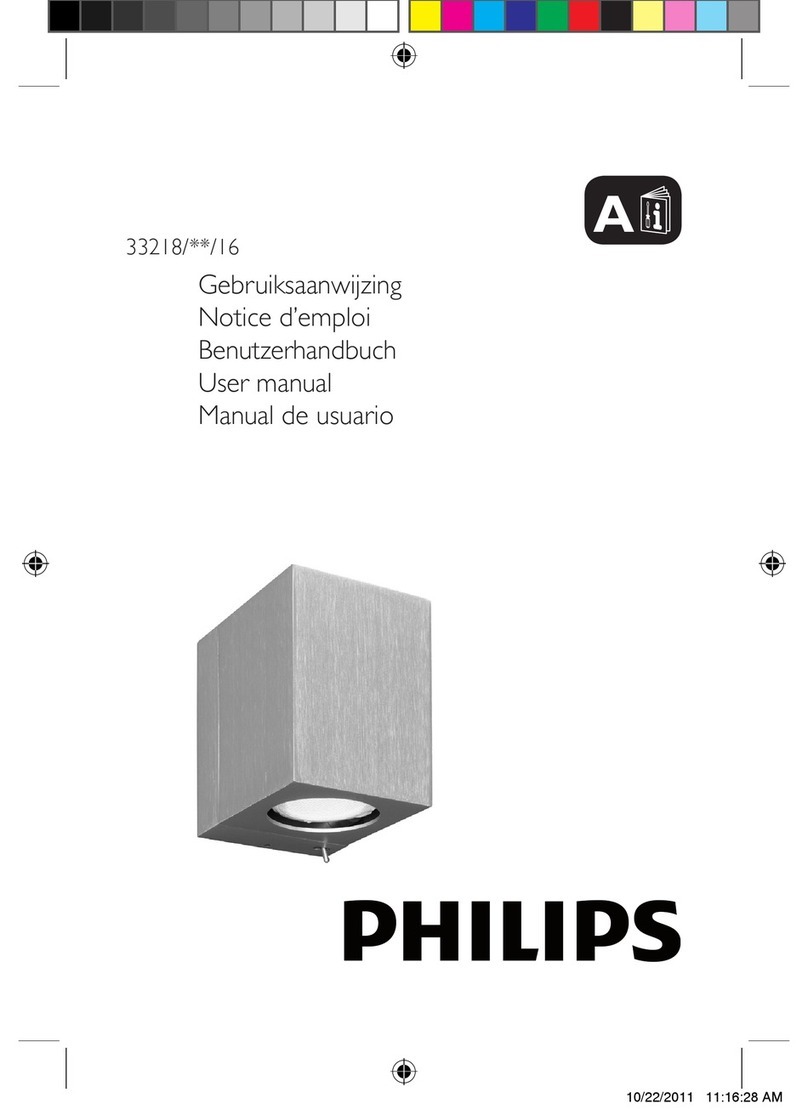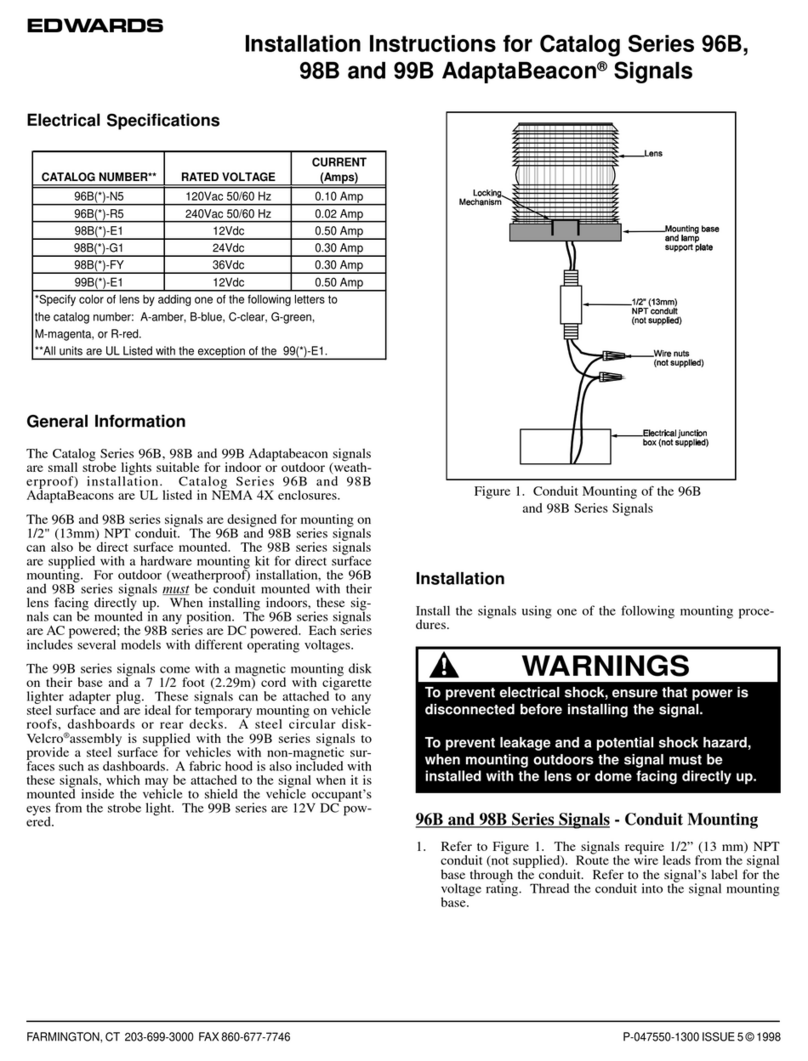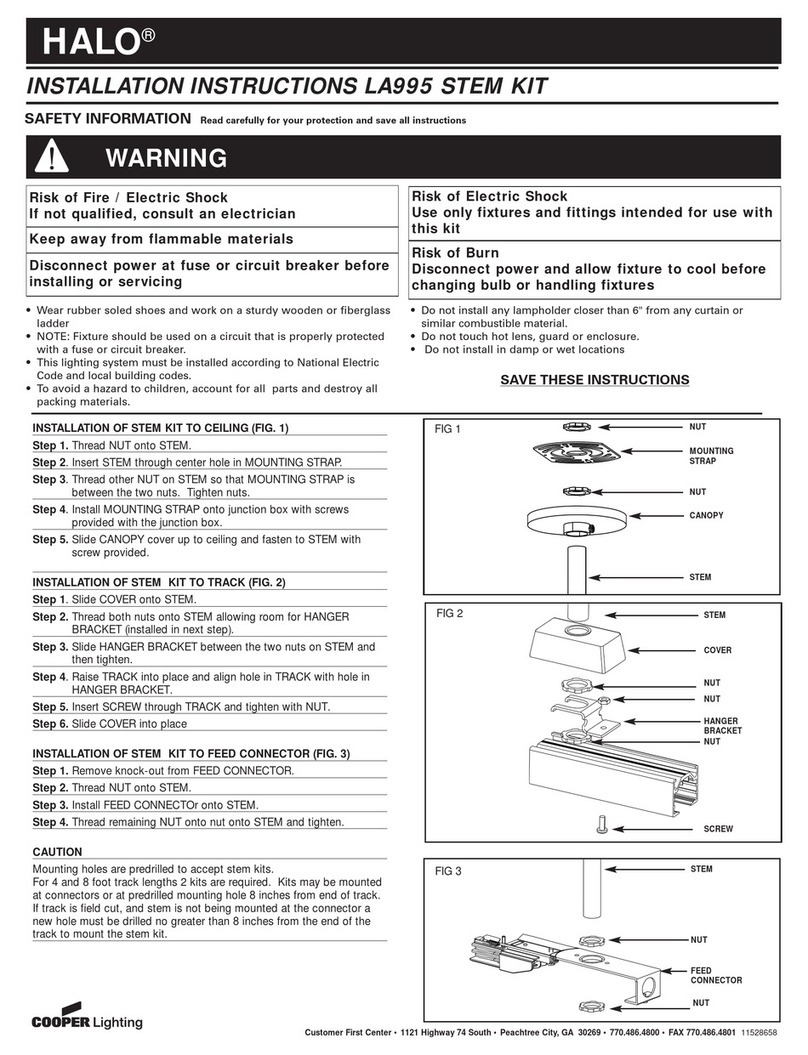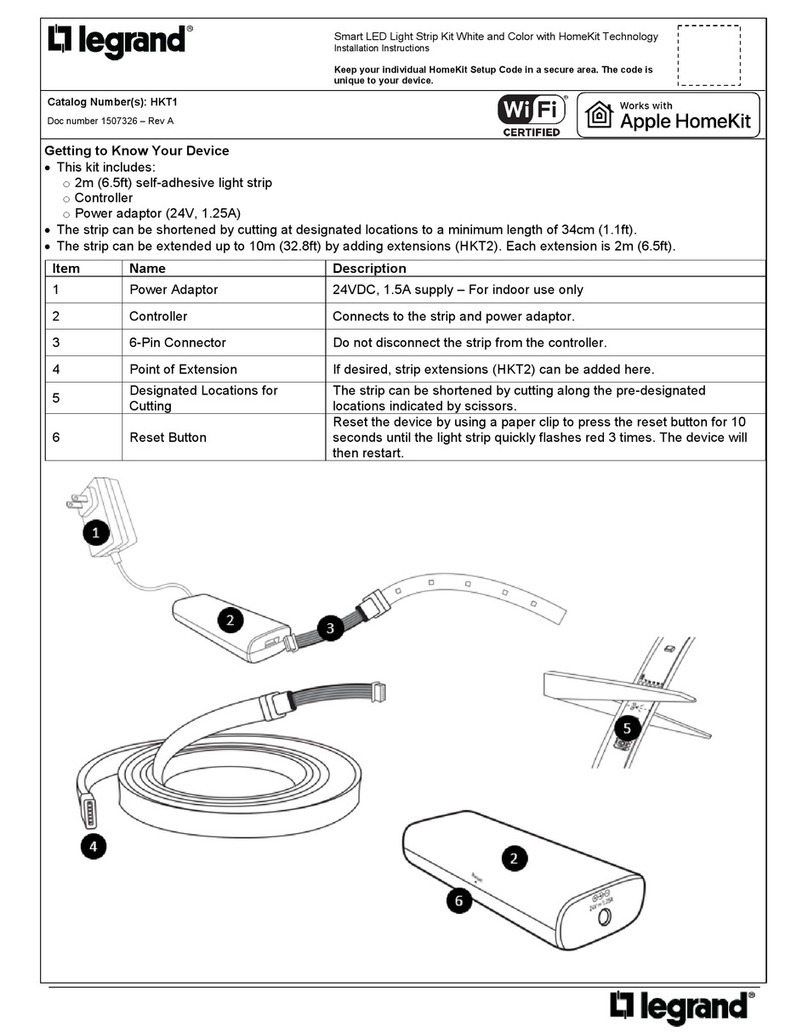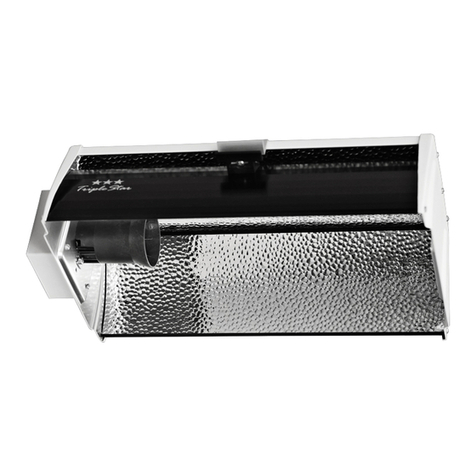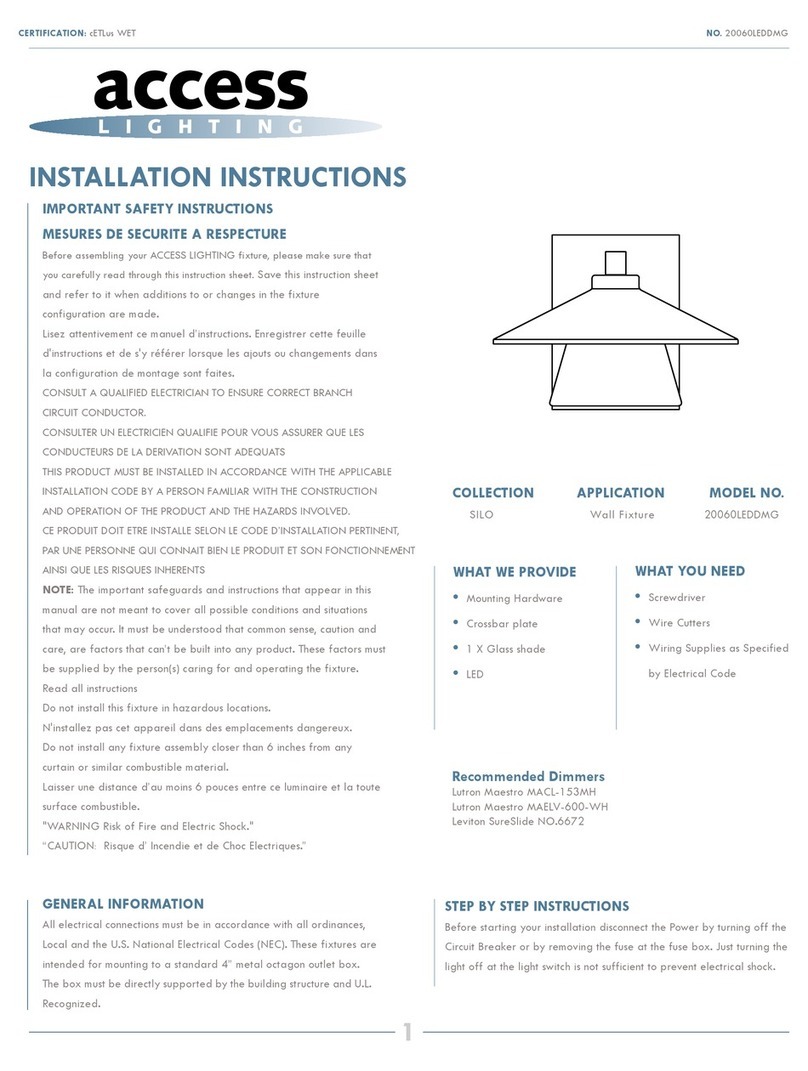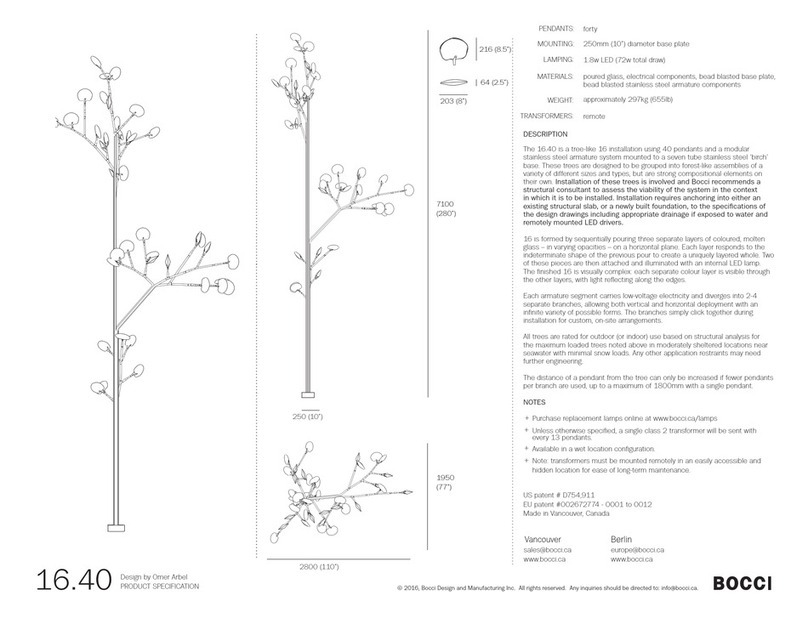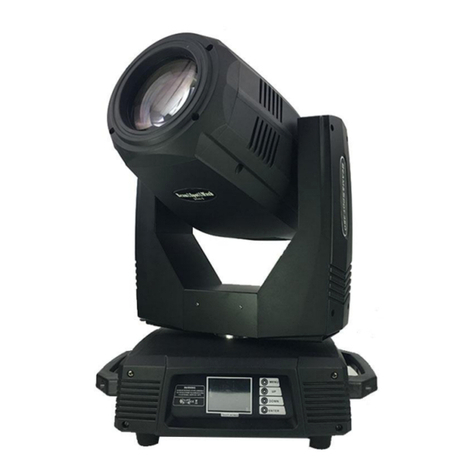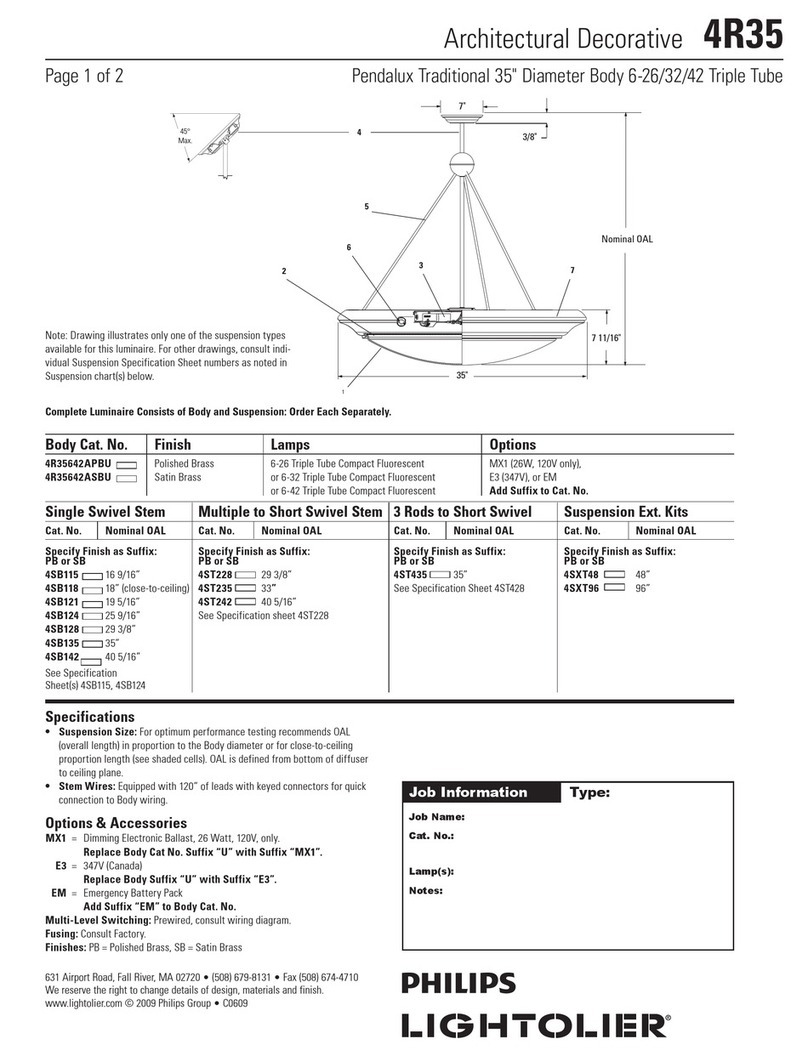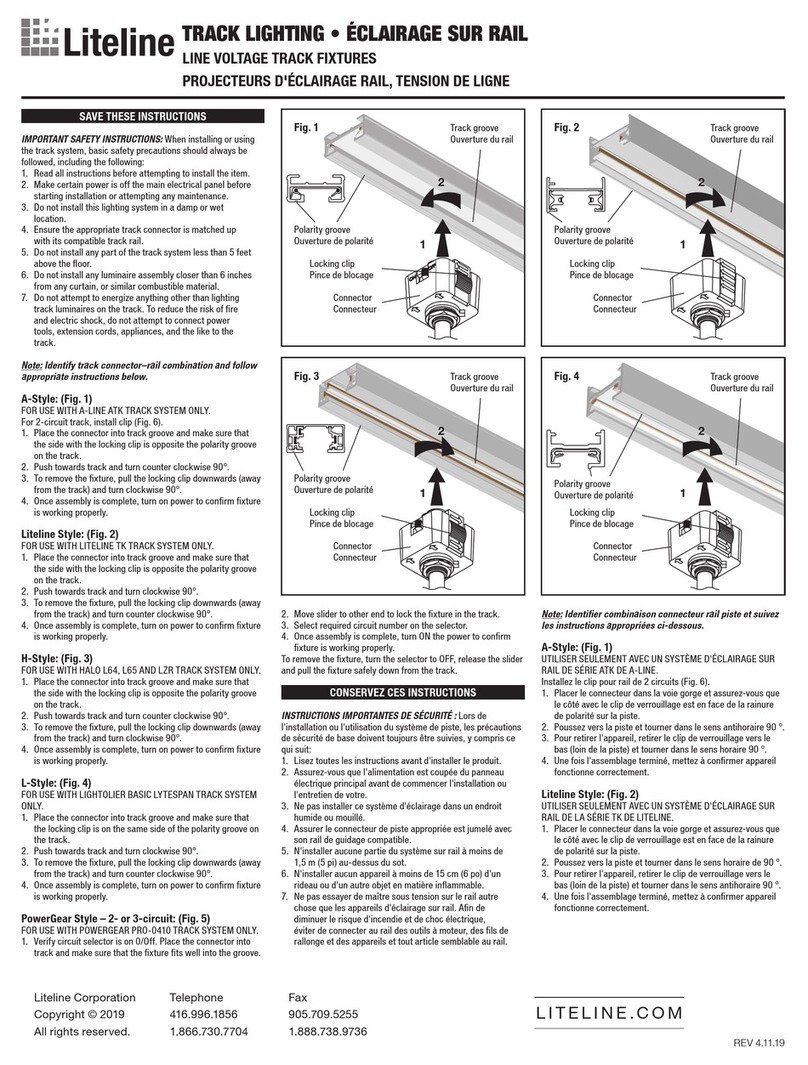Elfo FX PRO Series Technical Document

Manual operating
of flash lamps
FX PRO serie
FX 600 PRO
FX 1200 PRO
Producer:
ul. Zgierska 231D
91-495 Łódź
POLAND
tel. +48 42 658 26 01
fax +48 42 658 81 56

Page 2 www.elfo.com.pl Manual operating of flash lamps FX PRO serie
Table of contents
I. Introduction...................................................................................................................3
II. Purpose .........................................................................................................................3
III. Features.........................................................................................................................3
IV. Controls description......................................................................................................4
1. Photocell dome..............................................................................................................4
2. Acoustic signalling mode switch...................................................................................5
3. Modelling light mode switch ........................................................................................5
4. Side revolving clamp knob............................................................................................6
5. Display for values of flash energy and level of modelling light....................................6
6. Encoder.........................................................................................................................6
7. Bulb mode switch .........................................................................................................7
8. External control panel socket........................................................................................7
9. Tripod sleeve.................................................................................................................8
10. Power cable plug...........................................................................................................8
11. Photocell switch............................................................................................................8
12. Synchro socket..............................................................................................................8
13. TEST button..................................................................................................................8
14. Handle...........................................................................................................................8
15. Reflector........................................................................................................................8
16. Lock bolt.......................................................................................................................9
17. Modelling lamp halogen ...............................................................................................9
18. Flashtube.......................................................................................................................9
19. Lock lever .....................................................................................................................9
20. Glass casing (cushion). .................................................................................................9
21. Modelling light bulb fuse socket...................................................................................9
22. Data table......................................................................................................................9
23. Integrated power socket - switch...................................................................................9
V. Conditions of use ........................................................................................................10
VI. Device class ................................................................................................................10
VII. Power supply connection ............................................................................................10
VIII. Housing.......................................................................................................................10
IX. Accessibility................................................................................................................10
X. Protections ..................................................................................................................11
XI. Service ........................................................................................................................11
XII. Technical data.............................................................................................................12

Manual operating of flash lamps FX PRO serie www.elfo.com.pl Page 3
I. Introduction
FX PRO flash lamps come from highest utilitarian properties line of our products. These
lamps have been especially designed for demanding photographers who think highly of
comfortable work and simplicity of maintenance alike.
They are characterized by reliable repeatability of parametres and settings due to digital
technology applied. FX PRO lamp construction has been based on proven solutions that
come from Quant flash lamps. Cooling system has been modernized the most. Lamps have
been equipped with fan and strong, halogen modelling lamp as well. Front panel has been
changed thoroughly but readable LED display is still the same. Lamps are equipped with
popular accessories fastening system Bowens type.
II. Purpose
The lamps are intended for all professional photographers. They were especially
designed for photo studios needs that do portrait and occasional photos. They also may
successfully be used as an additional equipment for advertising photography due to high
parametres of utilisation.
Fastening system Bowens type enables any accessory to be mounted. Wide range of
accessories is available.
III. Features
FX PRO serie gives more advanced functions and enhanced technique than Quant at
comparable price. The flash energy can be set over the range of 6f with the high accuracy of
1/10 f-stop. There is advanced system of strong, halogen modelling light to be controlled.
The convenient element is an possibility the readiness for work to be selected, in order to
increase comfort of maintenance. Automatic energy dumping system allows the flashtube
life to be extended, and let the work comfort to be better too. Digital display allows the
relative energy value to be shown precisely (by 1/10 f-stop), and makes the values to be read
distinctly.
There is new model of flashtube applied. Flashtube and halogen bulb are shielded by
frosted glass casing. For that reason photographer can get perfect proportion between flash
and modelling light. Two sources of light inside the casing, shines if they were placed in one
place.It is important if accessories like reflectors, honeycomb or snoot are in use. Sticked out
flashtube allows the light to be diffused better.
Digital, rotary encoder was applied for energy to be controlled. There is possibility to
link up external control panel that takes over all functions and settings, including energy, and
make them be available to be controlled from panel, instead of front of the lamp.
All settings of the lamp can be latched (except flash), in order to avoid undiserable
settings changes
External control panel is an optional equipment and standard lamp doesn’t
include this one. There is one type of control panel that detects determined
type of the lamp, and adjusts for it automatically

Page 4 www.elfo.com.pl Manual operating of flash lamps FX PRO serie
IV. Controls description
All available controls are shown on picture.
1. Photocell dome
Protruding photocell dome let the visible light, flash of other lamp or IR come from all
directions to be gathered thoroughly. It is necessary for the lamp to be triggered out
properly. There is sensor characterized by sensitivity for the light that changes suddenly
(flash). The lamp is triggered out by another flash lamp wirelessly. The flash light must reach
photocell dome and then photocell works properly. It can be directional light or reflected
light harnessed to trigger out the lamp by photocell. For that reason triggered lamp
photocell has to be accessible for main, leading lamp. It is especially important when you
work on location. There is no photocell signal delay. The flash is being carried out at the
same time as the current "sees" a flash from another source.

Manual operating of flash lamps FX PRO serie www.elfo.com.pl Page 5
2. Acoustic signalling mode switch
The three-position switch controls acoustic signalling modes. To change operation mode
press the button consecutively. The round border of button shows present status of the
lamp.
Shines steadily –serie of pulsating sounds while lamp is
loading, and longer cue at the end.
Blinks –one long signal after the procedure of loading is
finished and the lamp is ready to flash.
Light off –acoustic signal is deactivated.
3. Modelling light mode switch
Energy of modelling light is controlled. There are three modes available. Repeatedly
pressing changes operation modes. Its activity is connected with bulb switch mode (7). The
round border of button shows present status of the lamp:
Shines steadily (100%) –there is full power of modelling light
activated.
Blinks (USER) –there is power of modelling light set by user.
Light off (proportion) –flash energy and power of modelling
light change simultaneously from minimum to 100% with
proportion.
USER mode. In order to enter the USER mode, press the modelling light mode button
(3) and hold it down until sound is audible (you can hear the sound regardless of acoustic
signalling mode). Halogen will be activates as well regardless of current modelling light
mode). Dot on display (5) disappears and the latest level of user mode is displayed. In order
to set a new setting, rotate control knob (12). Desired value is stored after 4 s and long
acoustic signal is audible. Then lamp is back to normal operation mode, and energy value is
displayed.
Status of
modelling
lamp
On
Blinks
Off
On
100%
doesn’t
extinguish
after the
flash
100%
extinguish
after the
flash
Off
Blinks
USER
doesn’t
extinguish
after the
flash
USER
extinguish
after the
flash
Off
Off
Proportion
doesn’t
extinguish
after the
flash
Proportion
extinguish
after the
flash
Off
Results of related operation of
both switches (3) i (7) is shown in
the table.

Page 6 www.elfo.com.pl Manual operating of flash lamps FX PRO serie
4. Side revolving clamp knob
When accessories are heavy there
is need to lock, and then twist the
knob right (clockwise). If the lamp is
to be bent up or down, there’s need
to catch the handle with left hand and
then rotate the knob
counterclockwise with right hand
slightly. Rotate clockwise again and
desired position is fixed.
5. Display for values of flash energy and level of modelling light
It shows relative energy values:
for lamp FX 500 PRO from 1.0 to 2.0
for lamp FX 1200 PRO from 2.0 to 7.0
There are relative power values. When both lamps (regardless of the type* and its power)
have the same value displayed, energy are also the same.
Status of the readiness is indicated on display too. When the lamp is not ready to use (is
charging or discharging) set value on display blinks until loading process is complete. When
the lamp is ready display shines constantly. Display functioning like this is regardless of
acoustic signalling and occurs in any situation.
When USER mode is activated, display shows relative values of energy of modelling light:
for lamp FX 500 PRO from 10 to 60
for lamp FX 1200 PRO from 20 to 70
6. Encoder
Digital potentiometer in other words. It is used for energy and level of modelling light
to be set. Construction of energy control knob is based on potentiometer with unlimited
revolution angle. When it rotates, displayed values are changing instantly. Energy value is
shown with 1/10 f stop accuracy.
In order to increase the energy twist the knob right (clockwise), to decrease, twist left
(counterclockwise). As a result of changing energy, lamp has to charge up itself, or (if
decreased) dump excess of energy gathered inside capacitors. Display is pulsating when it is
being processed. Display shines continuously when it is finished and lamp is ready to flash.
*Applied for lamps produced by Elfo®serie: Quant, Quant Pro, AX, FX, FX PRO, Miqro Pro,
Miqro Pro B, Octalight.

Manual operating of flash lamps FX PRO serie www.elfo.com.pl Page 7
7. Bulb mode switch
Modelling light bulb operation mode is controlled. There are three modes available.
Repeatedly pressing changes operation modes. The round border of button shows present
status of the lamp:
Shines steadily –modelling light always shines.
Blinks –light shines only when lamp is ready to flash.
Light off –modelling light doesn’t shine.
Level of modelling light energy is relative to settings of modelling light mode switch (3).
8. External control panel socket
Jack RJ-45 connector for connecting an external control panel. Control panel takes over
control of all functions (except USER settings). When control panel is connected, blue border
of TEST button is pulsating. Neither buttons on front of the lamp (except TEST button) nor
encoder work. When control panel changes the value, borders of corresponding buttons
response. The latest values of lamps are restored when control panel is disconnected. There
is one type of panel that automatically detects up to which lamp is plugged and takes over its
control range.
There are almost no differences between maintenance of lamp by means of control
panel and of main front panel of the lamp. There are the same symbols that make the
maintenance easy. Each press of button causes mode and signalling change. Energy control
element consists of two buttons „-„ and „+”, instead of revolving potentiometer, for utilitarian
conditions. Each press (7) or (2) button makes energy increased or reduced by 1/10 f-stop.
Control panel is equipped with cable 10 m long.
External control panel is not standard equipment. It can be bought separately

Page 8 www.elfo.com.pl Manual operating of flash lamps FX PRO serie
9. Tripod sleeve
Lamp is equipped with universal 5/8” sleeve, and it enables lamp to fix on the tripod or
hung on pantographs under the ceiling system. There is set screw inside that sets the lamp
and it protects it against accidental knock off.
10. Power cable plug
The set is supplied with cable 5 m long. It must be connected to socket with protection earth
electrode.
11. Photocell switch
Photocell operation mode is controlled. There are two modes available. Repeatedly
pressing changes operation modes. The round border of button shows present status of the
lamp:
Shines steadily –photocell on.
Light off –photocell off.
There is photodiode placed underneath photocell dome. It is the sensor
for incident flash light (1).
12. Synchro socket
The socket allows to connect the device to enable synchronous triggering flash. It can be
synchro cable, radioflash receiver or something else. There is low voltage 12V and for that
reason all connected devices are protected.
All devices connected to synchro socked must have plug JACK 6,3 mm type.
13. TEST button
The test triggering out of lamp is a main task of this button. It also enables current
energy settings to be latched. It is useful when accidental changes of settings are unwanted.
To activate this function press and hold down TEST button until sound is audible. Current
settings are locked and blue border of TEST button shines steadily. Then lamp may be
triggered by means of TEST button, synchro socket or photocell (if activated) only. Function
may be deactivated in an analogous manner.
The TEST button can also turn the display by 180o(upside down). It is especially useful
when lamp hangs under the ceiling in reverse position. To activate there is need to hold up
the TEST button (13) first, and turn on main power (23). To turn the display on again please
repeat the procedure.
Shines steadily –settings locked.
Pulsating –there is control panel connected.
14. Handle
Carrying handle and manipulate the flash.
15. Reflector
Element that reflects the light.

Manual operating of flash lamps FX PRO serie www.elfo.com.pl Page 9
16. Lock bolt
Bolt locks accessories mounted on the lamp. To fix the accessories, insert the tabs into
the three holes of the lock ring and turn right (clockwise) until perceptible drag. There will be
self-latching and locking hardware.
17. Modelling lamp halogen
Halogen is a source of modelling light. It is possible to apply bulbs with pins GX6,35,
voltage ~230V and max power of 650W. In lamp FX 1200 PRO there is a standard halogen,
but in lamp FX 600 PRO there is standard halogen 300W applied with possibility to use
stronger. You must not touch the bulb because of high temperature. User can replace the
halogen alone, on condition that:
lamp is off (power cable plug out of integrated socket);
bulb is chilly;
handle with care, taking precautions to avoid of damage flashtube (warranty
doesn’t include flashtube that was mechanically damaged).
18. Flashtube
Main operational component.
You must not look directly at the uncovered flashtube
when used!!!
You also must not touch the flashtube because
its high temperature and fragility!!!
Flashtube replacement may be performed in authorized service only.
19. Lock lever
Lever to unlock the lock in order to remove equipment mounted on the lamp. It is one
hand neccessary to hold the accessories, and the other pull towards the back of the lamp
and turn left (counterclockwise). Now the bolt is released, and taps of any accessory can be
removed from holes of the lock. The large and heavy equipment requires other person to
help.
20. Glass casing (cushion).
Casing shields either flashtube or halogen bulb, and it protects against accidental touch
and dust. It is fastened to reflector by means of three springs.
21. Modelling light bulb fuse socket.
Modelling light bulb fused socked. User may replace the fuse by oneself on condition
that the lamp is separated from electricity. There is fuse F2A (F4A in FX 1200 PRO) applied. It
is strongly recommended to aplly fuse compliant with specification because of safety.
22. Data table
The label contains the most important information about the device, such as the product
name, serial number, basic electrical parameters, CE certificate.
23. Integrated power socket - switch
There is integrated power socket placed at the bottom of the lamp. It consists of:
main socket ~230V with earth electrode (25);
fuse socket (24);
main switch (23).

Page 10 www.elfo.com.pl Manual operating of flash lamps FX PRO serie
There are two fuses type T4A (T6,3A in FX 1200 PRO) inside the socket. One of them
works and the other is spare part. User may replace the fuse by oneself on condition that the
lamp is separated from electricity. It is strongly recommended to aplly fuse compliant with
specification because of safety.
V. Conditions of use
optimal work duration………… steady
portability…..………. carrying is allowed
VI. Device class
Protection against electrical shock. Connection to electricity with earth electrode (PE) is
required.
VII. Power supply connection
Disconnectable three-wire cable included.
VIII. Housing
It is electric one and keeps away the user from touch of dangerous voltage, and protects
against highly dangerous increment of energy.
IX. Accessibility
Operator access area………………………whole unit
Limited access………………………picture below
Flashtube replacement only
in authorized service!
Picture shows the most crucial unit area.
These elements are sensitive to shock
because of fragile, glass components.
There is also dangerous voltage too.
You must not look directly at the
uncovered flashtube when used!!!

Manual operating of flash lamps FX PRO serie www.elfo.com.pl Page 11
X. Protections
All lamps FX PRO serie are doubly fused:
main fuse –time delay fuse T4/4A in FX 600 PRO and T6.3/6.3 A in FX 1200 PRO;
modelling light bulb fuse - fast F2/2A in FX 600 PRO and F4/4A in FX 1200 PRO;
thermal fuse on/off automatic.
Main power circuits of the lamp and capacitors are protected against overheating. The
lamp can be turned off automatically when temperature exceeds critical values. It may occur
when lamp works intensively (frequent flash with modelling light, and small accessories), or
there is high outer temperature. If it occurs, symbol oF appears on display, and steady sound
is audible. Then lamp has to be off, and it is required to assure suitable air circulation, and
wait until lamp is on automatically. It may take several minutes dependently on overheating
degree.
XI. Service
In the case of lamp failure or in the event that the correctness of your lamp aroused
concerns, please contact us by phone or e-mail:
ELFO®Jan Tulikowski
ul. Zgierska 231D
91-495 Łódź
POLAND
tel.: +48 42 658 26 01
+48 42 658 83 44
fax: +48 42 658 81 56
www: www.elfo.com.pl
Opening hours: 800 - 1600 (from Monday to Friday).

Page 12 www.elfo.com.pl Manual operating of flash lamps FX PRO serie
XII. Technical data
Specifications
FX 600 PRO
No. Cat A157
FX 1200 PRO
No. Cat. A158
Flash energy
600Ws
1200Ws
Mains voltage
170V –240V 50Hz
f-stop (1m, ISO 100,
reflector 60o)
64,1
90,1
Energy adjustment
1/32-1/1
Charging time
0,9s –2,6s
0,9s - 2,8s
Flash duration t0,5
1/750s
1/400s
Colour temperature
5400K (+/-200K)
Modelling light optimal
power/max
300W/650W
650W
Energy control
Stepless by 0,1f
Control range
6 f-stops
Triggering
Synchro cable, photocell, IR
Triggering voltage
12V
Energy stabilisation
+/- 1%
Main fuse
4A
6,3A
Modelling light fuse
(F)2A
(F)4A
Dimensions
14 x 18 x 37 cm
14 x 18 x 43 cm
Weight
3,5 kg
4,4 kg
Additional functions
External control panel Quant RC
Version v1.4
This manual suits for next models
4
Table of contents
Popular Light Fixture manuals by other brands
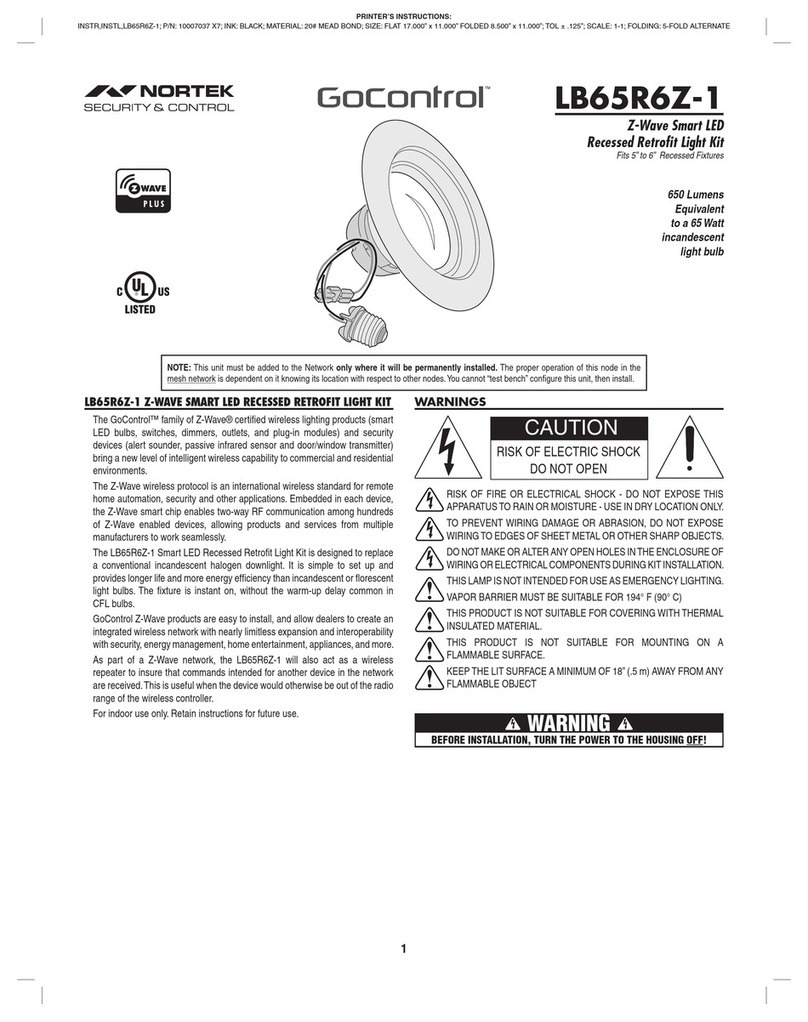
Nortek
Nortek GoControl LB65R6Z-1 instructions

Alice's Garden
Alice's Garden XMASEL180 manual
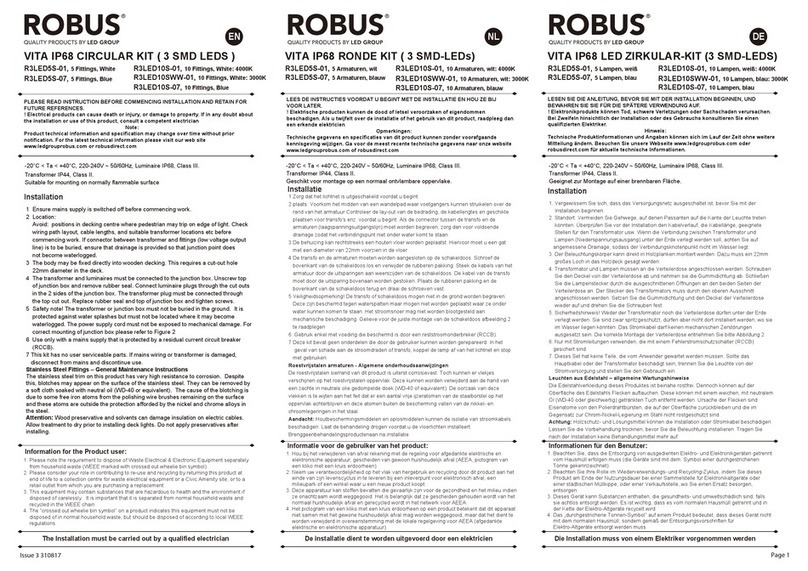
LED Group
LED Group ROBUS VITA R3LED5S-01 quick start guide

LED Group
LED Group ROBUS RTW0230RGL-24 quick start guide

Philips
Philips 69108-32-PU Specification sheet

Kino Flo
Kino Flo FreeStyle 31 LED quick start guide
